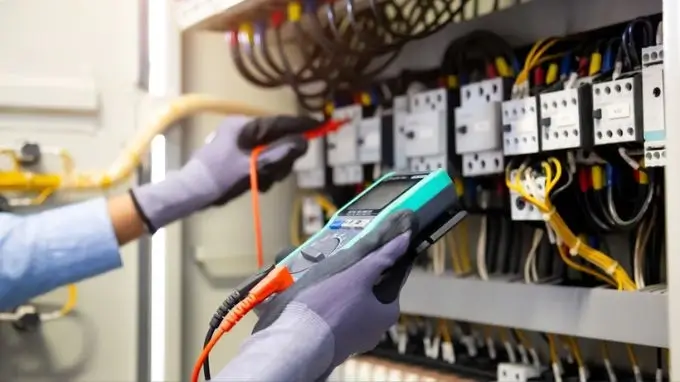Comply with regulations through expert regulatory compliance assistance.
Comply with regulations through expert regulatory compliance assistance.
Blog Article
Top Tips for Effective Electrical System Troubleshooting
Troubleshooting electric systems requires a systematic method, grounded in a thorough understanding of electrical concepts and security protocols. By acquainting oneself with circuit components, utilizing essential devices, and sticking to a structured examination technique, specialists can successfully determine and resolve problems. The nuances of efficient troubleshooting expand past plain technical knowledge; understanding how to document findings and focus on safety and security can considerably affect outcomes. As we explore these critical aspects additionally, it ends up being clear that grasping this process is not just advantageous however crucial for success in the area.
Understand the Fundamentals
Comprehending the fundamentals of electric systems is crucial for efficient troubleshooting, as a solid foundation allows service technicians to identify and fix problems more successfully. A comprehensive grasp of electrical concepts, such as voltage, existing, resistance, and power, is important in determining the root causes of troubles. Voltage is the electric potential difference that drives present through a circuit, while resistance opposes the circulation of present, impacting the overall functionality of the system.
Knowledge with circuit components, consisting of resistors, capacitors, diodes, and changes, is also paramount. Each part plays an unique duty in circuit actions and can influence performance when malfunctioning. Furthermore, understanding collection and identical circuit setups is essential, as these setups influence the circulation of voltage and existing within the system.
Service technicians have to be aware of possible risks, such as shock and short circuits, to apply secure troubleshooting practices. By mastering these fundamental principles, service technicians improve their capacity to carry out effective diagnostics and repair work, inevitably leading to enhanced efficiency and reliability of electrical systems (electrical system troubleshooting).
Gather Necessary Devices
Reliable troubleshooting of electrical systems requires the ideal set of tools to identify and resolve concerns properly. Vital devices include a multimeter, which measures voltage, current, and resistance, permitting for accurate evaluations of electrical parts.
Furthermore, protected hand tools such as screwdrivers, pliers, and cord pole dancers are vital for securely controling electrical links. It is additionally a good idea to have a circuit tester available to confirm the presence of voltage in electrical outlets and cords. For even more facility systems, a thermal imaging cam can aid find overheating elements, indicating potential failures.

Follow an Organized Approach
Having actually collected the ideal devices, the next action in fixing electrical systems is to follow an organized technique. A methodical approach guarantees that service technicians can determine faults efficiently and accurately, minimizing downtime and avoiding unnecessary repair services.
Begin by evaluating the system's schematic representations and specifications. Recognizing the layout and operational specifications will certainly supply context for identifying problems. Next off, separate the trouble area by utilizing a procedure of removal. This includes checking each element methodically, starting from the source of power and working in the direction of the lots.
Make use of testing equipment, such as multimeters and oscilloscopes, to collect unbiased data regarding voltage, current, and resistance at numerous points within the system. This empirical proof will certainly lead your troubleshooting efforts and aid to verify or remove look at this website prospective root causes of failure.
In addition, think about ecological elements that may affect the system's performance, such as temperature changes or wetness ingress. A comprehensive examination of electrical wiring, links, and elements will certainly ensure that all opportunities are accounted for.
File Your Findings
Thorough paperwork is necessary in the repairing process of electrical systems. This method not just help in recognizing the root reason of the issue however additionally serves as a recommendation for visit the site future repairing initiatives.

Additionally, preserving a log of components changed or repairs carried out is invaluable. This details supports supply administration and can aid evaluate the long life and reliability of certain elements.
Ultimately, the documents process ought to be detailed yet succinct, making it possible for simple retrieval and testimonial - electrical system troubleshooting. By prioritizing in-depth paperwork, service technicians can produce a valuable expertise base that not only help in existing troubleshooting however also empowers future maintenance initiatives, thus improving general system integrity

Prioritize Precaution
Acknowledging the inherent risks related to electrical systems is critical for guaranteeing safety and security during troubleshooting. Electric shock, burns, and equipment damage are simply a few of the potential hazards that service technicians deal with. Focusing on safety steps is not just a legal responsibility yet also an ethical important that safeguards both the technician and the surrounding atmosphere.
Prior to starting any troubleshooting task, service technicians need to don proper individual protective tools (PPE), consisting of shielded gloves, shatterproof glass, and flame-resistant clothing. Guaranteeing that the job location is dry and totally free of clutter can dramatically minimize the risk of mishaps. It is essential to de-energize circuits before starting any More Info work, confirming that they are not live with the usage of a multimeter or voltage tester.
Developing clear interaction procedures with employee is also essential; this makes certain that every person is mindful of possible threats and the standing of the electric system being serviced. Having an emergency situation action strategy in location can show important in the event of a case. By focusing on security measures, specialists can effectively minimize threats and promote a more secure office.
Final Thought
Efficient electrical system fixing depends on an extensive understanding of basic principles and a systematic approach. Prioritizing safety and security procedures makes certain the well-being of individuals included and the stability of the electric system.
Report this page